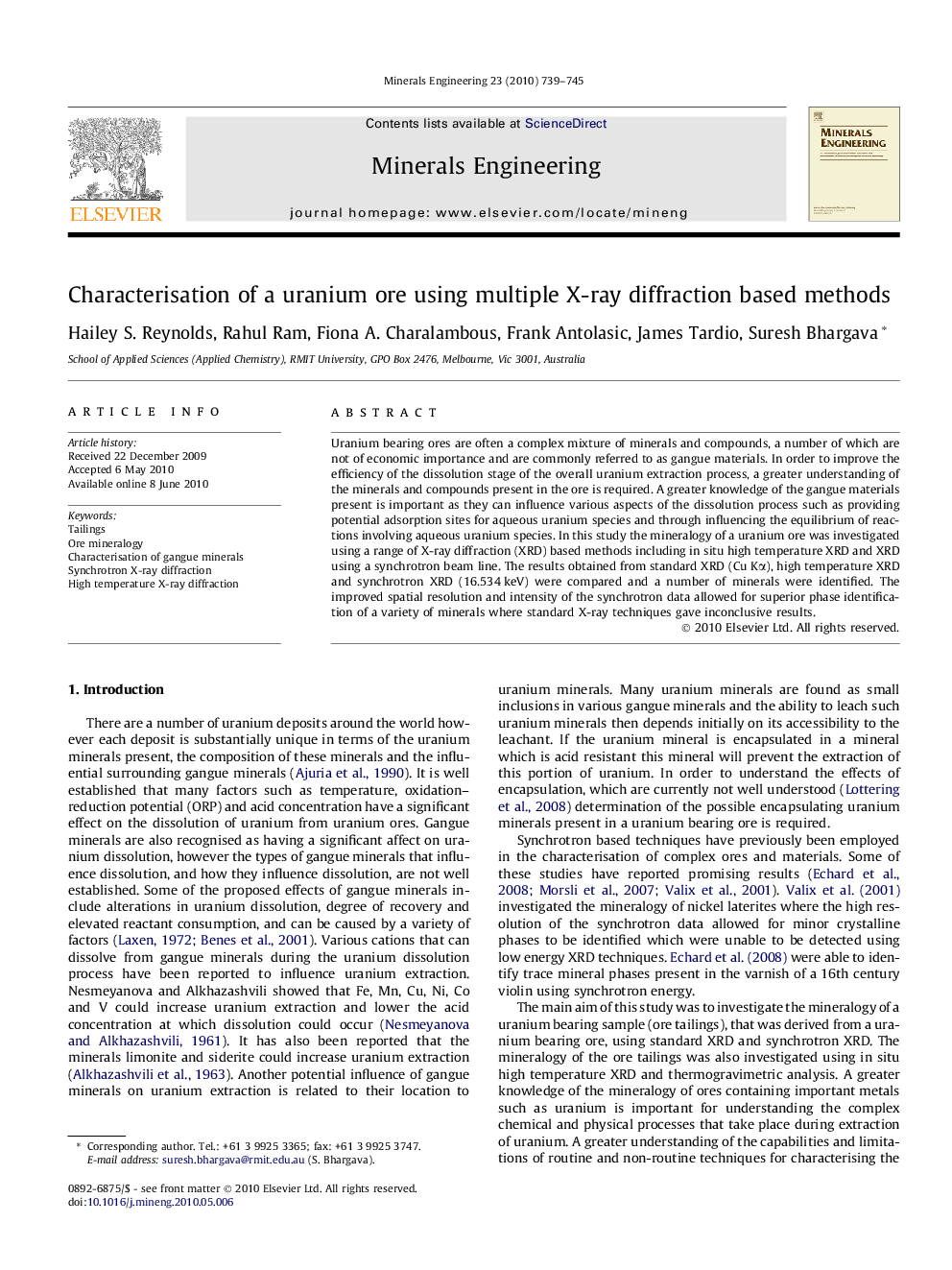| Article ID | Journal | Published Year | Pages | File Type |
|---|---|---|---|---|
| 234136 | Minerals Engineering | 2010 | 7 Pages |
Uranium bearing ores are often a complex mixture of minerals and compounds, a number of which are not of economic importance and are commonly referred to as gangue materials. In order to improve the efficiency of the dissolution stage of the overall uranium extraction process, a greater understanding of the minerals and compounds present in the ore is required. A greater knowledge of the gangue materials present is important as they can influence various aspects of the dissolution process such as providing potential adsorption sites for aqueous uranium species and through influencing the equilibrium of reactions involving aqueous uranium species. In this study the mineralogy of a uranium ore was investigated using a range of X-ray diffraction (XRD) based methods including in situ high temperature XRD and XRD using a synchrotron beam line. The results obtained from standard XRD (Cu Kα), high temperature XRD and synchrotron XRD (16.534 keV) were compared and a number of minerals were identified. The improved spatial resolution and intensity of the synchrotron data allowed for superior phase identification of a variety of minerals where standard X-ray techniques gave inconclusive results.
